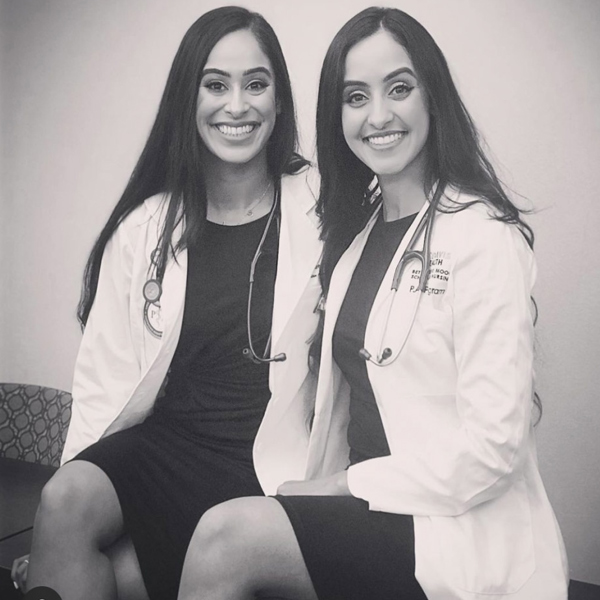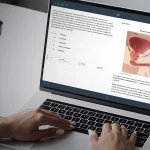If you're drawn to emergency medicine, a rotation is a great opportunity to explore the field, develop hands-on skills, and see what working in a fast-paced, high-stakes environment is like. To help you prepare, we connected with Manpreet and Sandeep Kaur, 2 sisters who shared their 2021 emergency medicine experiences with us as they completed their clinical rotations in PA school.
Both have since earned their PA-C credentials — Manpreet works in urgent care with a focus on family medicine and Sandeep practices in sports medicine. As first-generation college graduates with public health backgrounds, they’re passionate about equitable, community-centered care. Their tips reflect real clinical experience and a shared commitment to helping future PAs grow in knowledge, skill, and purpose.
Although we were initially intimidated prior to starting our emergency medicine rotation, it turned out to be one of our favorites. It taught us how to think quickly, act confidently, and adapt to whatever came through the door.”

Skills to Review Before Your Emergency Medicine Rotation
Before your emergency medicine rotation begins, it’s helpful to review a few key clinical skills you’re likely to use in the emergency department (ED). Having a basic familiarity with these exams and procedures can make it easier to jump in when the opportunity arises.
Take time to review:
- Suturing
- Neuro examinations
- Abdominal examinations (Murphy’s sign, McBurney’s point tenderness)
- Musculoskeletal examinations (e.g., apprehension test)
- Fluorescein eye stain
Don’t be afraid to ask to do a procedure! The ED has so much to offer in terms of learning opportunities, but you have to ask.”

These skills may be used often, and feeling prepared can help you take full advantage of hands-on learning moments.
Conditions to Know Before Your ED Rotation
During your emergency medicine rotation, you'll see a wide range of presentations — from subtle symptoms to critical emergencies. Familiarizing yourself with common complaints ahead of time can help you stay engaged and start thinking through differentials and next steps naturally.
While some treatments follow well-established protocols, others may be more complex or unique. Always work closely with your preceptor to ensure appropriate evaluation and care.
This has a broad differential. Rule out life-threatening causes such as appendicitis or ectopic pregnancy with history, exam, and imaging.
Use “AEIOU TIPS” to guide your differential. Don’t forget first to assess ABCs.
Assess for red flags, including neuro deficits and systemic symptoms. Most cases are benign, but don’t forget caudal equina.
This has a broad differential that includes cardiac, pulmonary, GI, MSK, and anxiety causes. Differentiate a heart attack from other presentations with history, EKG, and cardiac enzymes.
Presents with nausea, abdominal pain, and AMS. Treat with fluids, insulin, and electrolytes after confirming with labs.
Use “HINTS” bedside exam to distinguish peripheral vs. central etiology (stroke). Consider systemic causes such as hypotension or anemia.
Common ingestions include acetaminophen and aspirin. Know your antidotes, and utilize Poison Control if needed.
Common issues include conjunctivitis and corneal abrasions. Urgent referral is needed for globe rupture or retinal detachment.
Focus on ruling out dangerous causes such as subarachnoid hemorrhage and meningitis. If benign, treat with non-opioid pain relievers.
Differentiate benign causes from miscarriage or ectopic pregnancy with history, exam, hCG, and transvaginal ultrasound.
Infants under 3 months need a full workup for serious infections. Start empiric antibiotics early.
Look for dyspnea, pleuritic chest pain, and tachycardia. Use Well’s Criteria for risk stratification and confirm with CT pulmonary angiography.
This life-threatening condition requires prompt empiric antibiotics and fluids. Do a full lab evaluation for the source of the infection.
Follow standard trauma care protocol: secure airway, assess breathing and circulation, image for injuries, and stabilize fractures.
A high-acuity symptom with a broad differential including pulmonary, cardiac, and other causes. Assess ABCs immediately, check vitals, and perform a focused history and physical exam.
Sources: 1-12
Use your time in the ED to think critically about each case, including what’s urgent, what’s common, and what can’t be missed. Use our medical library for more evidence-based information on symptoms, diagnoses, and treatment options to ensure you're staying current with clinical knowledge and providing the best possible care under your preceptor’s guidance.
Tips for Strong ED Oral Presentations
In emergency medicine, efficiency is everything. Your oral presentations should be concise, focused, and structured to help your preceptor quickly understand the case and your thoughts.
Keep it concise! ED is fast-paced, and preceptors are looking for a brief summary of the patient’s chief complaint and pertinent positives.”

When presenting a patient, aim to include:
- A brief summary of the chief complaint
- Pertinent positives and negatives from the history and review of systems
- Key physical exam findings
- Your differential diagnosis and initial plan (labs, imaging, or consults)
Think of your presentation as a clear, relevant, and actionable snapshot. Practicing this approach ahead of time will help you feel more confident and communicate more effectively in a fast-paced environment.
Go-To Resources for the ED
The emergency department moves fast, and having the right tools at your fingertips can help you stay focused and informed. Here are some resources worth checking out, grouped by how they can support your learning:
Calculation Apps
- MDCalc (App & Website): A go-to app for evidence-based scoring systems and risk calculators. Save these high-yield tools:
- ASCVD Risk Calculator (cardiovascular risk)
- Centor Score (strep throat likelihood)
- Glasgow Coma Scale (consciousness assessment)
- Ranson’s Criteria (pancreatitis severity)
- Ottawa Rules (when to image ankle/knee injuries)
Diagnostic Reference Tools
- WikiEM: An ED-focused reference that walks you through common disease presentations, differentials, and treatment plans. Great for on-the-spot refreshers.
- UWorld PA Medical Library: A curated, searchable collection of disease-specific articles that cover clinical presentation, diagnosis, treatment, and pathophysiology. Useful for connecting your patient encounters to broader clinical knowledge.
- EMRA Guides: Offers quick-reference handbooks on antibiotics, orthopedics, and more. Ideal for looking up treatments or medication choices. (Full access requires membership.)
Mobile Learning
- EM Basic Podcast & Pocket Guide: This podcast breaks down core ED topics in a straightforward, student-friendly way. The pocket guide includes helpful checklists for history-taking, diagnostic workups, and more.
- UWorld PA Mobile App: Access clinical questions, detailed explanations, and performance tracking from your phone. Perfect for squeezing in quick practice sessions between shifts or while commuting.
The emergency department offers countless opportunities to get involved if you’re willing to ask. Whether you’re placing an IV, running through a focused ultrasound, or jumping in during a trauma case, showing initiative can lead to valuable hands-on experiences.
Don’t hesitate to ask your preceptors if you can assist with a procedure or observe something new. Even if you’re not confident initially, most providers will happily guide you. According to Manpreet and Sandeep, it’s one of the best ways to build your skills and confidence on rotation.
References
- Sehgal, M., & Garg, A. (2019). Burnout of residents in a medical college: A matter of concern. Journal of Clinical and Diagnostic Research, 13(2), VC10–VC13. https://doi.org/10.7860/JCDR/2019/39880.12649
- Society for Academic Emergency Medicine. (n.d.). Approach to abdominal pain. https://www.saem.org/about-saem/academies-interest-groups-affiliates2/cdem/for-students/online-education/m4-curriculum/group-m4-approach-to/approach-to-abdominal-pain
- Patel, M. D., Nguyen, D. D., & Dong, F. (2018). Evaluation of abdominal pain in the emergency department. Western Journal of Emergency Medicine, 19(4), 694–702. https://www.ncbi.nlm.nih.gov/pmc/articles/PMC6106829/
- Malkoc, A. (2022). Development of a clinical decision support tool for pediatric appendicitis [Master’s thesis, Umeå University]. DiVA Portal. https://www.diva-portal.org/smash/get/diva2:1730392/FULLTEXT01.pdf
- Johns Hopkins All Children’s Hospital. (2022, August 4). Hyperglycemia/DKA clinical pathway. https://www.hopkinsmedicine.org/-/media/files/allchildrens/clinical-pathways/hyperglycemia-dka-clinical-pathway-8_4_22.pdf
- NetCE. (n.d.). Diabetic ketoacidosis and hyperosmolar hyperglycemic state. https://www.netce.com/coursecontent.php?courseid=2831
- emDocs. (2018, July 30). emDocs cases: Headache management in the ED. https://www.emdocs.net/emdocs-cases-headache-management-ed/
- Mount Sinai Health System. (n.d.). Vaginal bleeding in early pregnancy. https://www.mountsinai.org/health-library/selfcare-instructions/vaginal-bleeding-in-early-pregnancy
- Texas Children’s Hospital. (2023, August). Feeding and weight loss standard: 0–60 days guideline. https://www.texaschildrens.org/sites/default/files/uploads/documents/outcomes/standards/FWLS_0-60_days_Guideline_82023.pdf
- Society for Academic Emergency Medicine. (n.d.). Pulmonary embolus. https://www.saem.org/about-saem/academies-interest-groups-affiliates2/cdem/for-students/online-education/m4-curriculum/group-m4-cardiovascular/pulmonary-embolus
- Society for Academic Emergency Medicine. (n.d.). Sepsis. https://www.saem.org/about-saem/academies-interest-groups-affiliates2/cdem/for-students/online-education/m4-curriculum/group-m4-approach-to/sepsis
- Benson, B., & King, M. (2016). Approach to abdominal pain. MedEdPORTAL, 12, 11327. https://doi.org/10.15766/mep_2374-8265.11327






